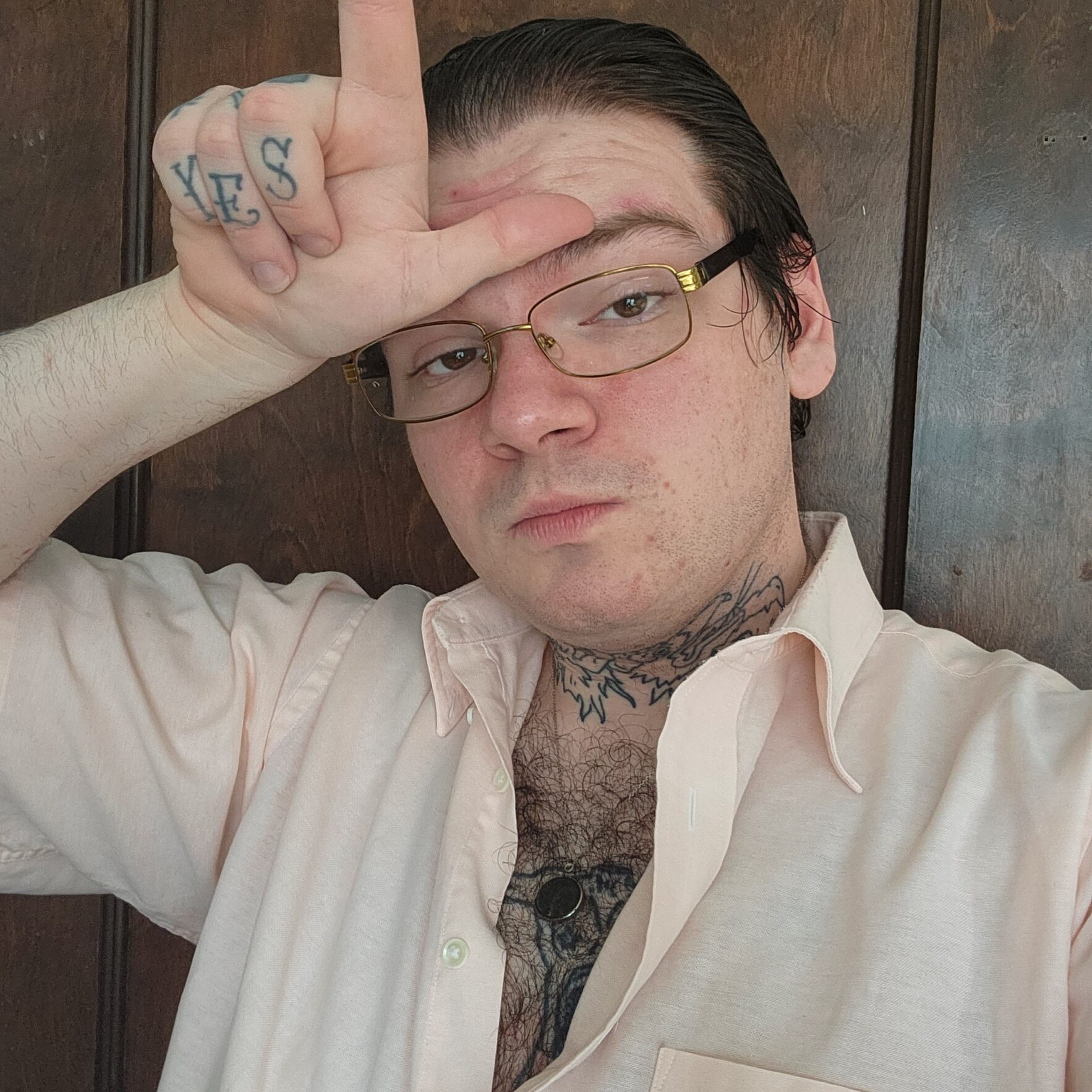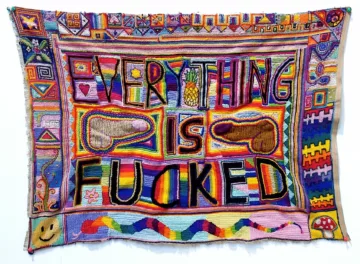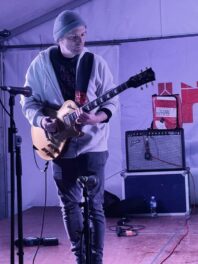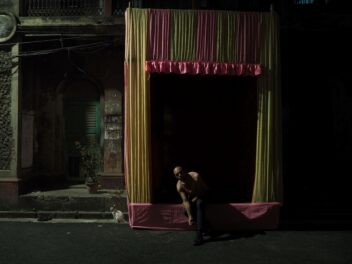Born in 1997, American writer and musician Colby Smith spent his early years growing up in the small towns of Beckley & Asheville. Places immersed in conservative, old-timey religions such as Baptism & Pentecostalism; were Colby quickly found himself an outsider. Due to his interests, his beliefs and his various mental health struggles.
Thankfully, like many fellow explorers, Colby found escape and inspiration through underground and outsider culture. Such as the writings of H.P. Lovecraft, the music of Current 93, the films of Stanley Kubrick, and the philosophy of Emil Cioran – To name but of few of Colby’s early influences.
As an adult, Colby now resides in Cleveland, Ohio, a larger town that provides him easier access to his interests; and importantly; fellow creatives. Such as comic maker & publisher Aaron Lange, who recently released Colby’s verse piece, Fish Turn Colors Then Break in my Hands; through Stone Church Press.
An autodidact; Colby is also passionate about paleontology, history, and zoology; interests which have found their way into his works – Such as his novel The Ironic Skeletons (published in 2022 by Snuggly Books.) Along with being the singer in recently disbanded band Taung Child, a key member of the international Neo-Decadent movement; and regular contributor to The Aither.
Wanting to know him better, we sent Colby some questions to answer over email.
Take a dive into his world, below…
Getting Acquainted
Name + D.O.B?
Colby Smith. 08/20/1997.
Interestingly, I was born 18 days after the death of William S. Burroughs.
I’ve been described as a “textbook Leo”, and I still don’t know what this actually means.
City, State and Country you currently call home?
Cleveland, Ohio, USA.
City, State and Country you’re from?
Beckley, West Virginia, USA.
Please describe some memories – such as art, music, friendships, writing, adventures, study, romance, politics, travel, work, religion, crime… anything really – from the stages of your life noted below:
* Your childhood:
It was an extremely insular and sheltered childhood where I now struggle to find a genuinely happy memory of that’s not been smudged by an air of artificiality.
For instance, I was so sheltered that I didn’t know that my family and I were in poverty for a while – mostly when we briefly lived in North Carolina when my dad still worked in the maintenance side of the cable business – until I was well into adulthood.
The only concrete memory I have of the 20th century is an episode of Jerry Springer playing on the TV.
Being physically abused in a daycare has now made me suspicious and angry at any daycare I pass. I was constantly sick, and they kept me sick.
My hometown was, and still is, a food desert, so I never got decent nutrition and was never at a good weight and I took the brunt of it when I entered school.
By the time I was 6 I knew my favorite animal was the okapi, and it still is; I felt absolutely menaced when my teachers said that my favorite animal was imaginary. The following year I adopted a ferret which I named Bandit on account of the little ashy mask around his eyes, who enriched my life for the following 8 years, until, through inbreeding that was no fault of his own, he fatally succumbed to pancreatic cancer in a way that seems to me now like Christ on the cross; and because ferrets are holy things, a constellation loses a star when one dies and ascends.
At age 9 I decided that I was an atheist, and I had a pretty good winning streak with holding onto those ideas.
Age 11 was a productive year for me because in the span of a month or two I discovered suicidal ideation, YouTube, and masturbation back-to-back in that order.
I never got any intervention for the ideations part. I should’ve had at least some kind of counselling as early as age 8, but I didn’t
* Your teenage years:
Fuck most of it.
More serious books and films involved, but still pretty insular. Never went out or hung out with anyone, and I got accustomed to being the architect of my own birdcage so to speak early on.
I suffered from bulimia for a few years, but I kept the ritual part of it hidden from everyone in my life because if I got found out I knew that I’d be punished severely in some way even if I never actually was. What happened instead was more sinister: everyone recognized I’d lost a lot of weight, and that I was looking healthier generally, and so I was inadvertently egged on to keep doing it; I only stopped when I developed a duodenal ulcer, which still sticks around but most days it’s manageable, but the bulimic mindset that my brain was stewed in never really left.
The purging part of it’s not really a concern anymore, but the dysmorphia aspect of eating disorders is what seems to be going on now. Whenever one of my friends say I’m looking better and healthier at present – and, right now, I am – I’m always in disbelief when they say that, because I guess I’m hardwired to not perceive them.
I lived across the street from my high school; which, even though it was a high school in a poor rural area, it was considered comparatively posh and prestigious for reasons I still don’t understand. Besides mostly Baptists, there were a stunning number of Mormons and they were all goddamn fucking cunts, and they were always goddamn fucking cunts with a cartoon smile on their face and without a wrinkle in their shirts, surely always playing out all the fake ass scenes in The Book of Mormon in their heads as fodder for their prayers later and lamenting Mitt Romney didn’t take over the chunk of the world that their neo-colonial, blowhard missionaries didn’t need to.
One of them, who was named Ryan, was so much of a goddamn fucking cunt that he was proud, penis engorged with blood even, to introduce Sen. Ted Cruz at a Young Republicans event somewhere in West Virginia before Cruz gave a speech.
I had teachers who taught even subjects like biology and Earth sciences who were vocal young-Earth creationists, and I got in loud spats with them numerous times. This dumb motherfucker called Mr. Beckett, no relation to Samuel, believed that there was no evidence humans ever migrated out of Africa, as if the North America that is his El Dorado is simultaneously Africa, and also believed that what geneticists call “mitochondrial Eve” was a literal Eve, too.
Some teachers were paedophiles, and they were shielded from losing their jobs by the administration at every possible opportunity; but, in turn, they had no problem firing my old English teacher, who I got along swimmingly with, for being gay – all because some students reported him for being openly excited to adopt a child with his partner, which I reckon they got alarmed when he said “partner” instead of “wife”.
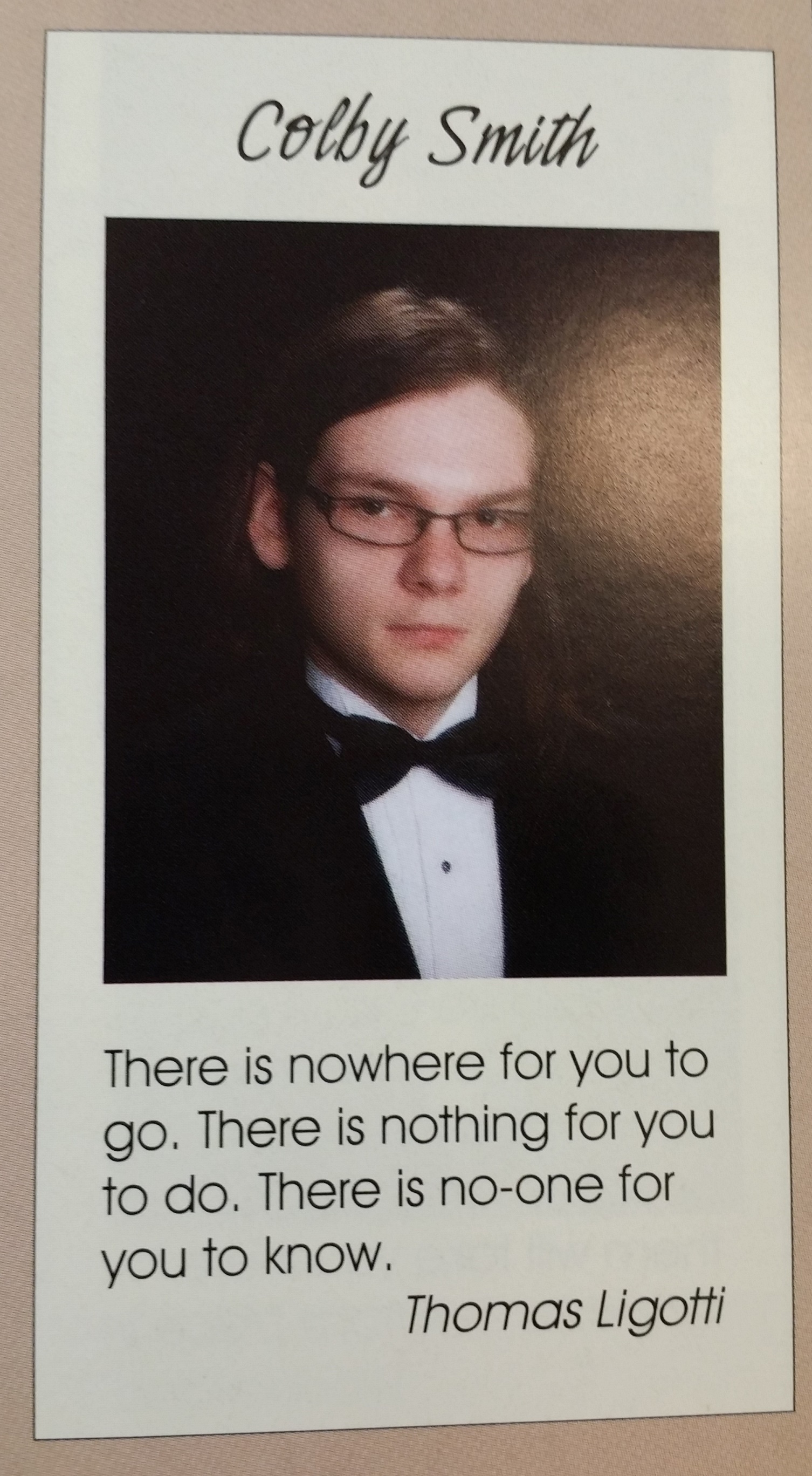
The moment I became an anarchist without realizing it until years later was when my Uncle Charlie died. He served in Vietnam, later becoming a pastor. While he was stationed in Vietnam, he was exposed to Agent Orange; some veterans exposed to the herbicide, decades later, develop a condition of the lungs where they become engorged with thick fluid which eventually leads to failure of the lungs.
Though he never relinquished good spirits, bravest at the last, it was extremely painful to watch him die. I put two and two together and realized my government killed him; and if they killed him, then they killed his buddies and everyone else – whether in the United States’ army or any Vietnamese who were unfortunate enough to be in its path, Viet Cong or not – who died from Agent Orange complications.
I consequently realized, after the tragedies of Michael Brown and Trayvon Martin and learning more about labour history – such as my home state’s tragically forgotten Battle of Blair Mountain – and the development of neoliberalism specifically, that state violence takes many forms.
Charlie’s greatest sacrifice, I feel, is donating his lungs to science, so others in his place might not suffer so greatly as he did. (It’s Memorial Day in the US at the time I write this part, and he has been on my mind all fucking day, and he is on my mind above anyone else.)
The one thing that happened in my teenage years that made my various passions feel legitimate instead of “useless”, “delusional”, “autistic” – all used verbatim at some point, but I’m not concerned about whether or not I’m autistic because I’ve got bigger fish to fry so to speak – was a visit with a very respected vertebrate palaeontologist.
Her name was Dr. Mary Dawson, and when I met her she was the curator emeritus at the Carnegie Museum of Natural History in Pittsburgh, PA. Her specialty was fossil lagomorphs – rabbits and related shit. I was able to arrange a visit because a cousin of mine who lives nearby in Butler was her best friend to the last.
In the mid-70s Mary was prepping to go on an expedition to the Arctic Circle, the fruits of that expedition including a weasel-like animal that was semiaquatic like modern-day otters that lived about 20 million years ago, and she needed someone to look after her Burmese mountain dogs. My cousin in Butler had been breeding Burmese mountain dogs for some years by then, so Mary reached out to her and that was that.
She was in her mid-to-late 80s when we met, and she was one of those people who was extremely sweet but also extremely no-bullshit. Mary took me on a little tour of the back rooms where the fossils that aren’t on display are kept. The storage rooms are huge, climate-regulated, and with cabinets that run practically from the floor to the ceiling that move once you crank a handle, everything being meticulously catalogued. Some of the larger fossils I saw included sauropod femurs, ceratopsid frills and horns, a skull that was a tyrannosaurid but I’m pretty sure it wasn’t actually Tyrannosaurus rex (Tyrannosauridae is a very diverse family of theropods though T. rex is the most famous), and a Megaloceros skull. The Megaloceros, a Pleistocene deer with grotesquely large antlers that have often been attributed to why it went extinct to begin with, is often colloquially referred to as the Irish elk, for it was first found in Dublin in the late 1600s but it occurred throughout Europe and Asia all the way to Siberia when it was still alive. The animal was the focal point of a very, very beautiful Seamus Heaney poem called “Bogland” that is dear to me at this point.
I met some of her colleagues, too, not just other palaeontologists but also a couple of paleo artists—these are the people who are responsible for artistically reconstructing extinct animals from raw fossil data, which is on any front extraordinarily difficult to do. She ended up writing my recommendation letter to Ohio University.
Mary passed away a couple of years ago, after a stint of overall decline in health. I was fucking gutted like a fish. I had never lost someone who served that kinda role in my life before.
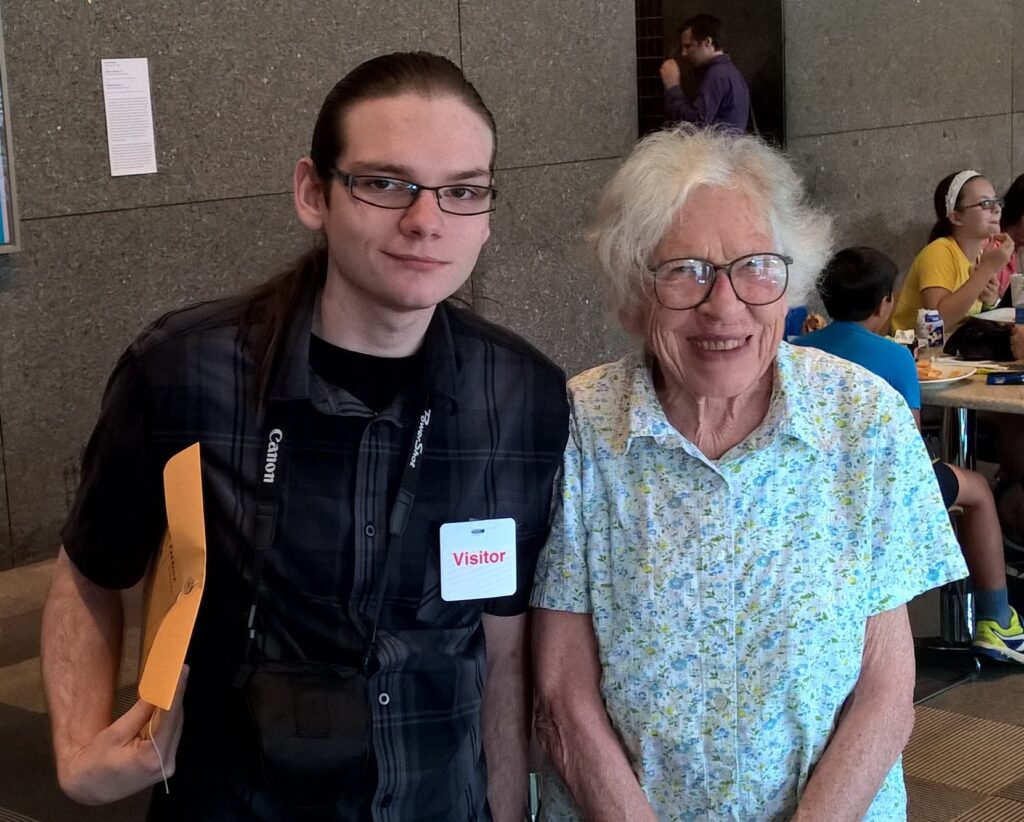
A rather funny thing that happened during my voyage into cinema: seeing A Clockwork Orange with my mother. I had read, and greatly enjoyed, Burgess’s novel at a pretty precocious age; it was the first genuinely adult book I’d read (not just in terms of the sheer content therein but also realizing that it was a morality tale with very extreme circumstances), and it was also the first thing I’d read since Lovecraft that made me have to train myself to read all over again for the sake of that book alone.
So, of course, I generally knew what was going to happen in the Kubrick film, and some of the shit that was excised from the film that remains in the book is worse, so I felt pretty fortified to watch it and emerge (mostly) uncorrupted. There was an independent venue in town called The Raleigh Playhouse and Theater – which closed down for several years but I think it’s up and running again – but I saw that they were showing A Clockwork Orange, and I told my mother that we should go. Though I was just 15 and my folks did sometimes treat rating systems like gospel – some films were more like the Gospel of Matthew rather than the Gospel of Luke for them – she agreed that it’d be reasonable for me to sit through the film since I’d read the book first.
We walk in, and we wait for other people to file into the theater, but nobody else does. So it’s just me and my mother nearly in the nosebleed seats for the whole fucking movie, and she wasn’t particularly disturbed until the “Singing in the Rain” bit, and after that part was over and done with she leans in and says: “I don’t remember it being this bad!”
* Your 20s so far:
College dropout and fine with it. Being a palaeontologist professionally is on hold for the indefinite future but it’s gotta be this way.
I currently do call center work, selling homeowners’ warranty and shit. I like talking to hundreds of people a week instead of expecting silence for weeks on end.
I live pretty close to Lake Erie right now, and that lake fills me with terror at night. I hate the lampreys in it. I fantasize about baking lamprey pie as a display of dominance kinda often.
Personal motto(s)?
“Express what cannot be expressed otherwise.”
The only one I need.
Creativity Questions
When and why did you first become interested in writing, music, and everything creative?
… and any pivotal creative moments / influences?
Not everything these days – I haven’t gamed in 6 years probably, and TV is totalitarian. But I graduated from picture books about animals and dinosaurs to H.P. Lovecraft at age 12, which is a good age for both Lovecraft and reading books without pictures generally.
Similarly, when I graduated from Top 40s bullshit forced upon me to Deftones. These days, I revisit Deftones more than Lovecraft.
The first really experimental things I had listened to, watched, and read – being Skinny Puppy, Un Chien Andalou, and Naked Lunch respectively – reset my brain to not only appreciate work that isn’t formally conventional or vogue but to understand it and deliberately seek it out for the sake of having a more rounded understanding of humans and what they are capable of.
The writer who’s influenced my life more than any other at this point is Thomas Ligotti. He’s a horror writer originally from Detroit but is now based in Florida; he’s also oftentimes called the greatest living horror writer, and I’d agree most days. The most pervasive motif in his work is a gnosis of meaninglessness and suffering, which is conveyed in various manifestations such as marionettes, derelict urban landscapes, the performing arts, and arbitrary shadowy authority.
From the “weird fiction” shit I’d been accustomed to since Lovecraft, Ligotti helped me branch out considerably. Learning about his chief influences, including Argentinian modernist/fabulist Jorge Luis Borges, the Polish stylist and artist Bruno Schulz, and the Romanian pessimist philosopher Emil Cioran, began my now-lifelong interest in translated literature; most of the translated stuff I’ve read since then either comes from the French or Japanese, but I’ve had a taste of something from most regions at this point.
In concurrence to discovering Thomas Ligotti, I discovered the British esoteric group Current 93, who Ligotti has collaborated with periodically for roughly 30 years at this point. Current 93 had really stretched my conception of what you could do with songwriting, both in terms of David Tibet’s lyrical style and content and also how radically their sound has evolved since the early 1980s, at times from album to album.
Some astonishing things I’d been introduced to through Current 93 include the English Decadent writer Count Eric Stanislaus Stenbock, the encyclopaedic religious poem Jubilate Agno by Christopher Smart (which he composed while he was interred in St. Luke’s Hospital for Lunatics in London), Louis Wain’s famous cats, and The Thunder, Perfect Mind (a long mystical poem discovered in the Nag Hammadi library which explores divinity in terms of paradox).
I’ve got a large red Current 93 logo on my arm – my very first tattoo.
There was a period in my youth when I identified as an antinatalist after reading Ligotti’s nonfiction book The Conspiracy Against the Human Race and some Cioran as well; antinatalism being a philosophical position that since the frequency of pleasure and pain in life are lopsided towards pain, that it is not only better never to have been born in the first place but that it is a moral failure to reproduce because of it.
Ligotti takes this idea the logical extreme by claiming that it should be humanity’s one moral imperative to stop reproducing to the point of voluntary extinction. Ligotti’s ideas are tangentially related to the chief position of the Voluntary Human Extinction Movement, who cite the current ecological crisis as reason for humans to abort their whole species.
The main reason I got over these ideas later was because most of the drawbacks of existence antinatalists use to justify their position—and this goes back to Arthur Schopenhauer, who is credited for initially conceiving antinatalism, as it is known in the West at least—are typically consequences of established economic structures (capitalism is now, of course, more broadly relevant than authoritarian communism) and the State.
Regardless, all that shit was educational.
Later still, by some fluke, I was published alongside Ligotti himself in the inaugural issue of Vastarien, which was initially conceived as a Ligotti-centric literary journal but has since had more of a general horror focus. My piece was a critical essay called “Eraserhead as Antinatalist Allegory”. It was the first piece of serious nonfiction I ever wrote, and that was finished around when I turned 19 probably.
Ligotti’s piece was the foreword to the then-recent Polish edition to his short fiction collection Teatro Grottesco, which I and many others consider his finest work. I don’t think I’ll ever be so excited to be in the same table of contents as another writer again.
Before I listened to a comparatively recent album called New Brigade (2011) from a Danish band called Iceage, you could call me a casual or spiritually distant listener of punk rock. I’d loved the really early stuff like The Stooges, The Velvet Underground, and the Sex Pistols for a hot minute; but I was still at the point where I dug the kinda shit that the Dead Kennedys and Black Flag were saying and playing but still thought Crass sounded like shit despite their message going further than any of the aforementioned groups. (Ironically, I was an avid enjoyer of black metal by then.)
New Brigade changed it all for me. Not only was it extremely impressive that Iceage were still in their teens when they made a record so uncompromising in ferocity and elegance at once – it became even more apparent with their later releases that their frontman, Elias Bender Rønnenfeldt, is one of the great stage-poets of our time – but it was the first time a punk record made me wholeheartedly accept that punk was a good avenue for me creatively and also socio-politically. I’ve never looked back with that shit. One of the tattoos I got later on was the phrase “NATURE IS VIOLENCE”, which is taken from their song “Everything Drifts” off of the You’re Nothing album; it was more relevant to me at the time, based on some ideas that were inhabiting my head pretty comfortably, but I still dig it.
This past fall, I finally got the chance to see Iceage in Columbus, Ohio at a joint called Skully’s, and legendary experimental metal group Earth opened for them (which was fucking dope in itself). I got to meet Elias Rønnenfeldt outside after the gig, and I was super starstruck; that dude is very sweet and smiles like a joker and he thought my tattoo of his words was pretty sick.
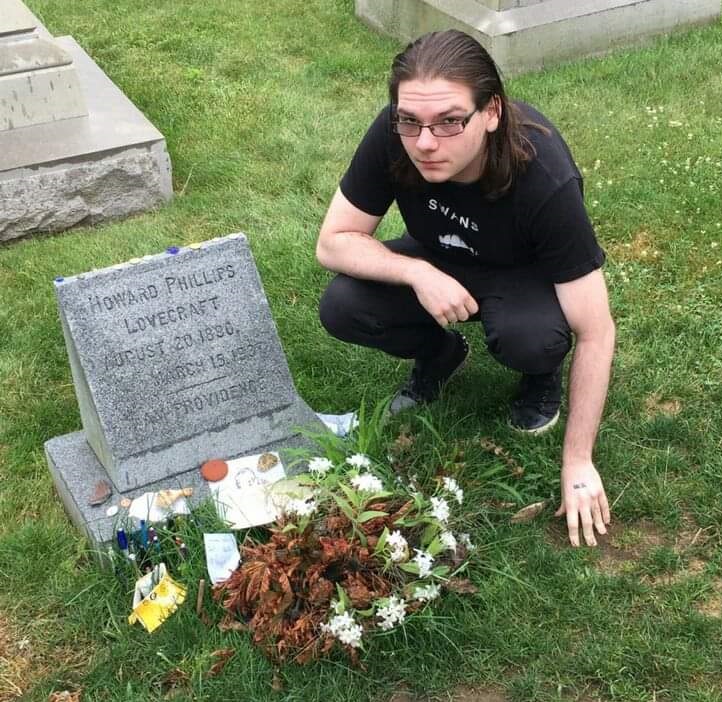
Photo by Colby’s mom.
Please share with us the details of your many tattoos!
I’ve got 28 total, I think that’s right.
My hands are the most extensively decorated.
Across the bottom row of my fingers on the left hand: alpha and omega alternating.
On my right: YES! because it is an inherently affirmative and optimistic word, which I need in times when I’m plumb into the abyss. Top row, left hand: tombstone with RIP (not a nod to GG Allin, sorry), the kanji for “death” which is pronounced shi, the initials TC for my old band, and a little vine (quite elegant for a kitchen tattoo, for sure).
Top row of the right: a serpent, an inverted coffin (triple entendre – Fuck death! Strigoi! A little homage to a New York band called Show Me The Body!), a little femur, an ankh.
Left thumb: the kanji for “love”, pronounced ai.
Right thumb: a skull, of kinda crude design but still cute.
Knuckles on both hands: teeth, one of each of a molar, incisor, canine, bicuspid.
Top of left hand: a trilobite, specifically genus Paradoxides.
Top of right hand: NERO, after the last emperor in the Julio-Claudian dynasty in Gothic lettering, and I love showing that one to proselytizing Christians in public, because when they understand what it means they visibly get stone cold shaken.
Left wrist: HIP PRIEST, after the song by The Fall.
Right forearm: Paul Verlaine’s sketch of Arthur Rimbaud.
Left forearm: an illustration from Kathy Acker’s amazing novel Empire of the Senseless, which is a long dagger shoved through a rose, which is also bleeding, with a banner that reads DISCIPLINE AND ANARCHY wrapped around the blade – it is worth noting that Acker dedicated this novel to her tattoo artist.
On my left bicep: a guillotine with a skull again, and beneath that in cursive lettering is the phrase MONTANI SEMPER LIBERI, West Virginia’s state motto which means “mountaineers are always free”.
Right bicep: the portrait of a Neanderthal woman surrounded by orchids, which is my most recent and at present my favorite tattoo.
Right thigh: the phrase DESTROYER OF ALL BEAUTY – a line from a currently-unpublished poem that I got in a basement in Portsmouth, Ohio while doing a poetry-reading livestream with some other people; it’s banged up pretty bad and needs touching up, and regrettably I’m not fond of the circumstances behind this one anymore.
On my neck: the heads of Cerberus, taken from one of William Blake’s watercolour paintings for The Divine Comedy – hopefully soon, I’ll complete the set with Blake’s interpretations of Behemoth and Leviathan.
Torso: André Masson’s illustration for the inaugural issue of Georges Bataille’s Acépahle journal, which no doubt most readers of The Aither are intimately familiar with.
Some other planned/potential tattoos:
* The head of a dodo, weeping, eyes X’d out.
* A goat carrying a caduceus, an image that I encountered in a very riveting French book of religious scholarship called The Bestiary of Christ by Louis Charbonneau-Lassay.
* A hoatzin
* The phrase CONTORT YOURSELF, from the song by James Chance and the Contortions
* RICHEY STILL LIVES
* This decoration from my edition of a Symbolist novel called The Revolt of the Angels by Anatole France, which is a stylized dagger with a sidewinding blade and angel wings.
* Yaldaboath, decapitated
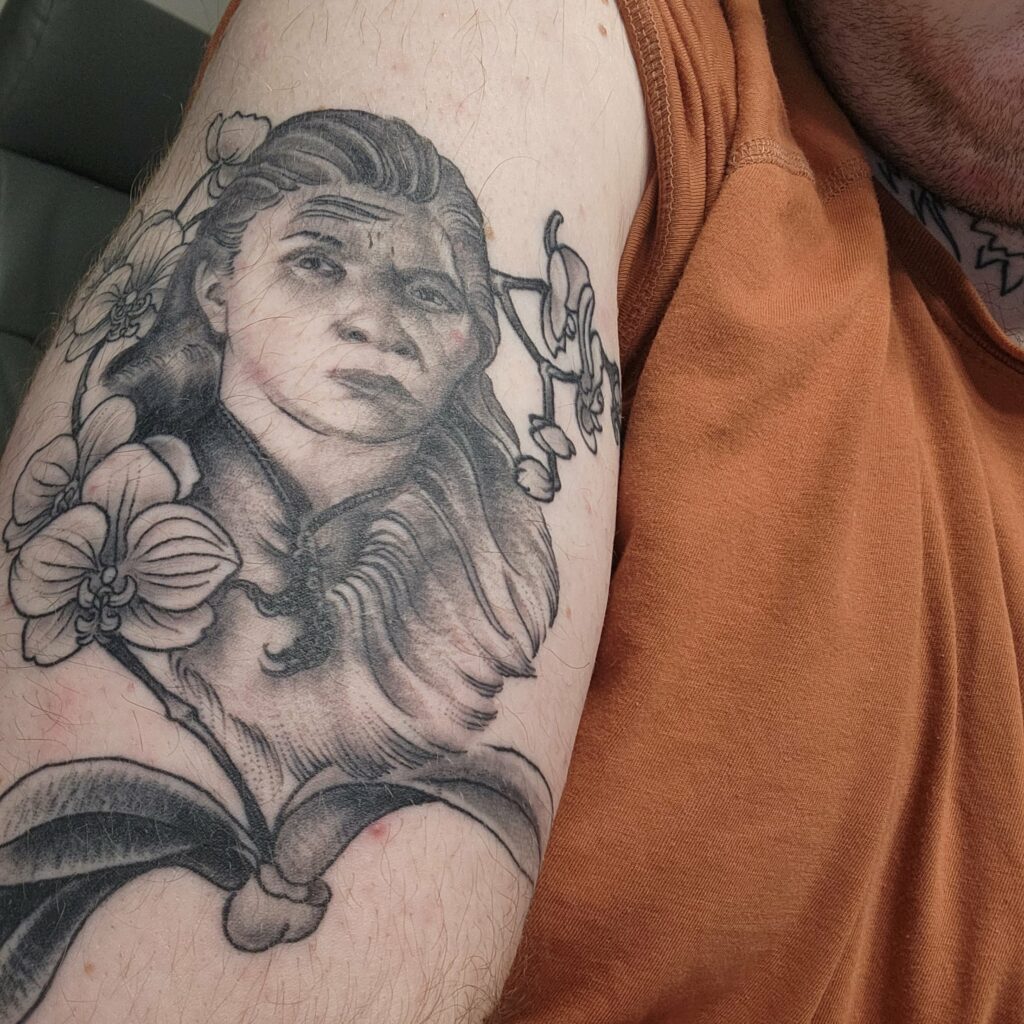
You were involved with Athens, Ohio based band, Taung Child – Please describe your history with that band in more detail…
That was a band I formed while I was at Ohio University, and the band came together out of spite basically. Even though Athens, Ohio has a rich history of punk and various other underground-type gigs, both in DIY venues and more formal venues like The Union (there’s also at least two photos of various Nirvana members wearing a t-shirt of a good Tex-Mex restaurant there called Casa Nueva), the only shit being played in that town when I came in for school was dogshit bedroom pop and dogshit indie rock which not only sounded insultingly infantile and embarrassing but was also a way to form pretentious cliques and also safe spaces for sexual predators that established their clout under the pretence of being woke and feminist and “safe to be around” in a very connect-the-dots way. (Experience sez! don’t trust a motherfucker who makes being “wholesome” their entire personality the same way you wouldn’t trust anyone who makes being “edgy” or “ironic” their entire personality.)
I wanted nothing to do with that, so I took the initiative and started something different; getting the right people together was miraculously easy, and we stuck together from spring of 2017 to summer of 2020 when, yes, the pandemic was our reality by then and the eventual EP had been out for a couple of months.
It was me on vocals, Will (and later Jules) on guitar, Brody on the second guitar, Gabriel on bass, and Cobi on drums. Though we remained a cult act during our run – pretty impressive for a college town that is rather small to begin with – we got a reputation for being strange and interesting.

Photo by Jules Jeffers.
It was noise rock, but it was really plodding and angular; the closest thing to our sound that I didn’t find out about till after we’d split is a band called LOWER from Copenhagen, and I wish more people knew more about them because their work was singularly electrifying and their Walk on Heads EP is one of my all-time favourites.
This is the official blurb for our EP, though:
“In Ohio noise-rock band Taung Child’s debut EP, hazy, shapeless pools of duelling guitar-bound distortion-dissonance rest within the bedrock mould of catchy and purposeful bass-lines and groovy and forceful drums. Overtop are the bellicose vocals and aggressively anguished lyrics of vocalist Colby Smith.
Taung Child is a group focused on the impossibility of proper articulation – the urgent need for answers warping quickly into a frustration loud and harsh and unmelodic.”
The crowd favorite was “Beastfucker”, which we opened most of our shows with and remains my favorite song we did. I don’t know how we never got shit over that song, but it was less about literal bestiality and more about humans embracing their natural states in extreme ways – symbolic bestiality, I reckon. That was the first track on the EP.
The other three were titled “L’Histoire des Bêtes”, “Throw Yourself Down a Flight of Stairs”, and “Creativity as Pathogen”. We did a local radio interview and session once, and we were talking about the then-projected EP, and I told the host that the cover was going to be Mussolini’s bashed-in face. She was taken aback pretty hard; whoever was listening in probably was, too. I don’t remember if we’d officially decided on The Slush Pile Formerly Known as il Duce being the album cover by that interview; but regardless, it was the base for the final cover.
It was recorded in Chris Lude’s basement – Chris plays guitar in a very wonderful, very hyperactive band called DANA based in Columbus, who fairly recently did a tour with Australia’s own Tropical Fuck Storm; which is hilarious to me because when I first heard TFS, I thought damn this is cool, they sound like DANA – and mastered by a mutual friend named Sean Gleeson.
As of now, it’s the only release I’ve ever put out with music, but I still love it. I’m not even mad that my vocals sound like a parakeet being crucified anymore.

The coolest thing we did was open for a huge New York band called Show Me The Body in Cleveland when they were touring to promote their then-recent album Dog Whistle, and that was a night I’ll always rank highly in my “all-time” list of nights. Great dudes. I’d never seen a pit that crazy until that show, and I’d seen Converge before!
During the second band’s set (En Love), Cobi’s then-partner got knocked out cold in the pit, and a couple of us sincerely thought she might be a goner, but she revived soon after that idea got in our heads and she and Cobi spent the rest of the night laughing about it. I still see En Love play around Cleveland sometimes, they loved Taung Child and their guitarist got hitched some time ago, too.
Our final show was a couple weeks before lockdown, supporting a wonderful band from Memphis called Nots. They’re an all-women trio that play a dizzying brand of shouty no-wave that’s at once psychedelic and punchy.
Our guitarist, Jules Jeffers, is still super active in the Columbus music scene. Her main project, which she was doing before she joined Taung Child later, is called Wasp Factory. She gave this group the name before she had read the Iain Banks novel, and she has evidently still not read it even after I got the book for her as a gift (and I have still not read it either); this is a pretty beautiful thing, in my view, on par with Kate Bush admitting she’d never read Wuthering Heights by the time she recorded that single, and evidently long after the fact.
It’s really frenetic and shrill music, but it’s always pretty tight. Jules likes to go full Neubauten on her guitar, sometimes belting out a modified power drill and making it dance across the strings, or belts out a bow and plays it like a cello.
The other, for which she plays bass, is called Forest Fucker. They’re funny environmentalist grindcore that’s still pretty punishing as if there was never a joke to be had. Forest Fucker and Wasp Factory both are the biggest Morrissey fans in the tri-state area. By sheer will, Wasp Factory and Forest Fucker will let Morrissey land a record deal again.
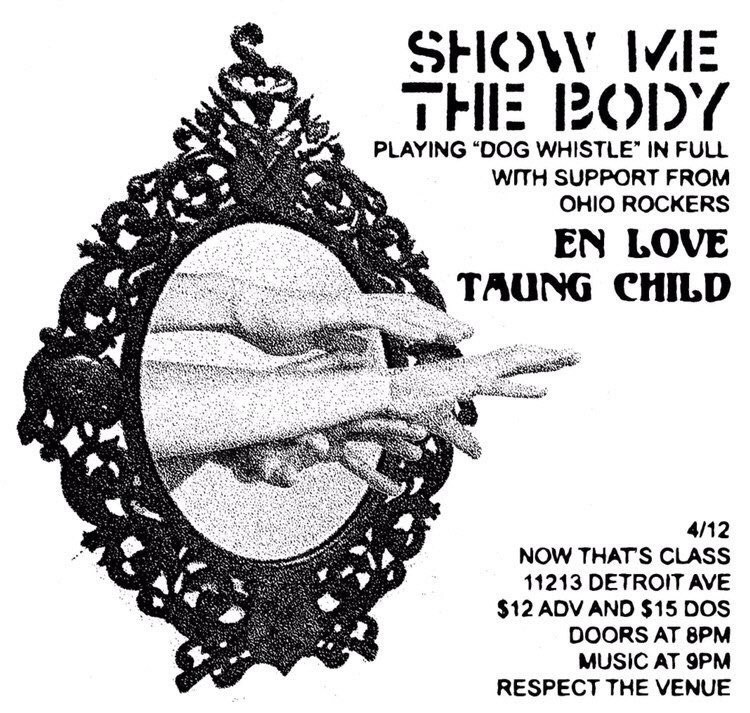
You’ve got two books out at this point: The Ironic Skeletons (Snuggly, 2022) and Fish Turn Colors Then Break In My Hands (Stone Church, 2023, illustrated by Josh Bayer.)
Please describe both of them, and give insight on how they developed.
The Ironic Skeletons is a novella I wrote while still in college – I was probably 21 years old when I ended up finishing it – that got picked up by Snuggly Books and finally published in March of 2022. Snuggly Books specializes in translating French Symbolist and Decadent literature into English, but they also publish work from other countries and aesthetic traditions as well as contemporary writers – many of those falling under Neo-Decadence, which I’d also say of The Ironic Skeletons.
I also tend to call it scientific horror, much less in the tradition of H.P. Lovecraft and more in that of H.G. Wells. A really obscure story of his that influenced the The Ironic Skeletons considerably is called “Zoological Retrogression”, which is a conjectural story about the idea of “devolution” that came up in Victorian evolutionist circles that erroneously claimed that organisms can be prone to retrogression and thus become more primitive over time rather than more advanced – the crux of Wells’ story is the sea squirt, and Wells eventually posits that this could at some point be applied to the human race.
There’s also a lot of textures present in the novella that are owed to the work of Dambudzo Marechera, Dennis Cooper, Robert Aickman, and Kathy Acker.
The novella centres around a schizophrenic palaeontologist who works on fossils that shouldn’t actually exist in reality, but they do. These fossils begin disappearing, when our palaeontologist confronts her colleagues about their existence, they deny the fossils’ existence outright.
There are some elements to this work that are autobiographical, namely the shit involving the protagonist’s mental illness, and there’s also some pretty intense interrogation of some ideas I picked up while in university palaeontology courses:
a) Fossils are the basic raw data that we have for extinct life, and if we don’t excavate a fossil, it might as well not exist on a practical level for palaeontologists;
b) When an expert on a given subject dies, their expertise dies with them – perhaps not in totality, but in terms of a comprehensive picture of their expertise.
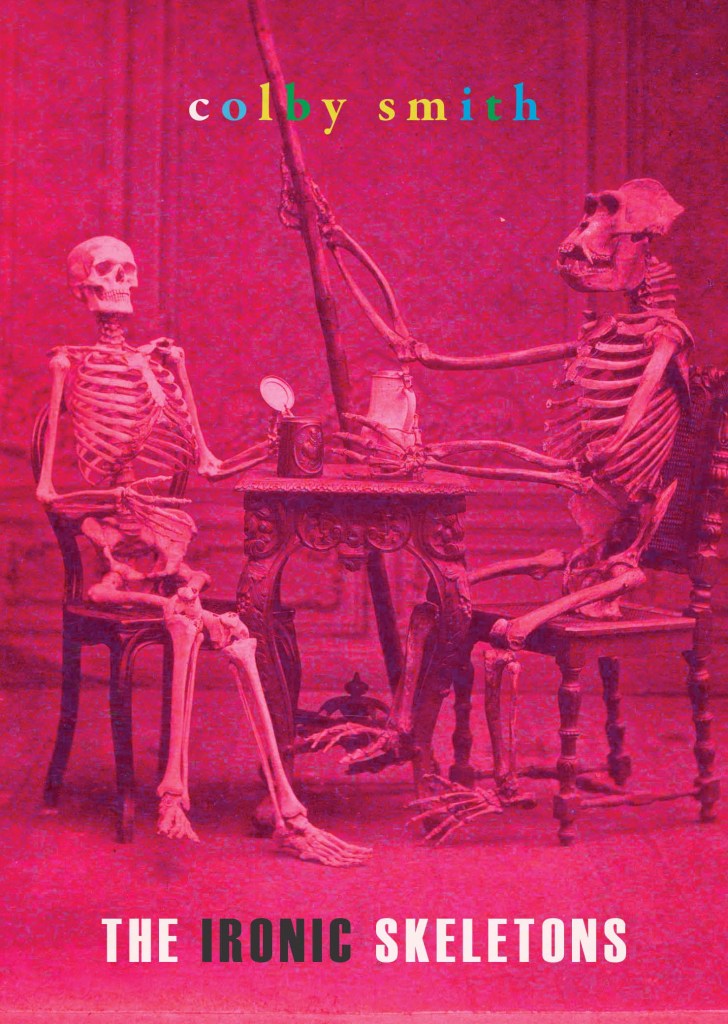
Published in 2022 by Snuggly Books.
Fish Turn Colors Then Break In My Hands that’s at once a punk-Modernist hagiography of Jeffrey Lee Pierce, who sang for the LA group The Gun Club, and an account of some startling events that are described on the back cover:
“My already-intense investment in The Gun Club reached terrifying levels one night in November of 2021.
While I was at a show with my then-partner, I was idling at the bar waiting for the next act to start when I suddenly believed that the ghost of Jeffrey Lee Pierce was trying to possess my body.
I didn’t want to lose my agency, to be a vessel of a bleach-haired poet who already had his fucking turn. My partner laughed it off, trivialized my fear into nothingness; and when I begged her to let me go home and take my antipsychotics, my mood-stabilizers, she became furious and stormed off, leaving me at the bar till she pulled a 180 and warmly embraced me again like Jeffrey Lee Pierce was never mentioned.
Such scenarios got worse till everything ended.”
And there’s little else to say about those events besides that, and the actual poem itself.
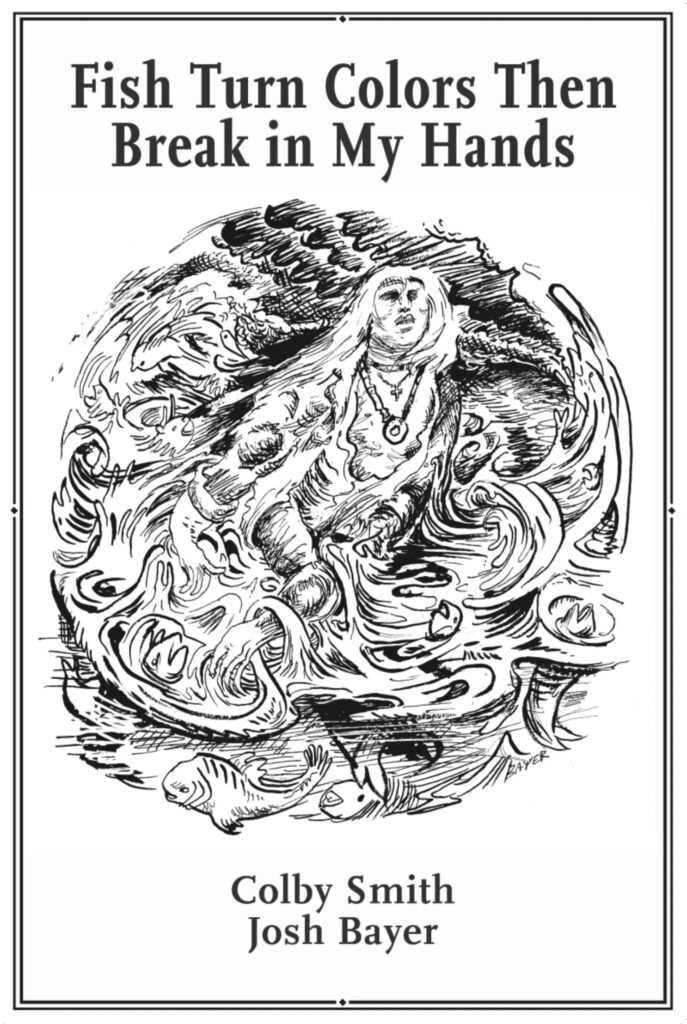
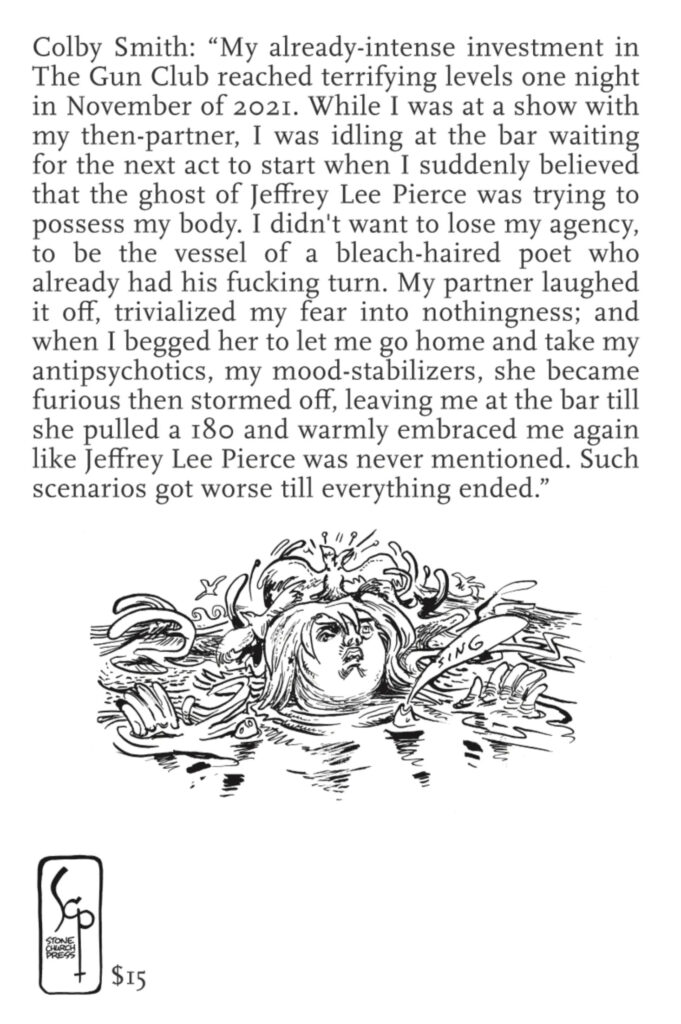
Published in 2023 by Stone Church Press.
How did you come to connect with ‘Stone Church Press’ – who published your aforementioned work ‘Fish Turn Colors Then Break In My Hands’?
Aaron Lange, who runs Stone Church Press along with Jake Kelly, saw one of my pieces here in The Aither – it was “Cop Shoot Cop and the Poetics of Confrontation,” I think – and reached out to me after that.
We both happen to be in Cleveland, so we ended up hitting it off in real life, too. He asked me, after he had also read another of my essays for The Aither, about The Gun Club’s song “Texas Serenade”, and a friend who died then turned out to be a rapist piece of shit in life (“The Nudity of Death…”), if I’d written anything else involving The Gun Club in some way.
By then I’d written a shorter, more rudimentary version of Fish Turn Colors Then Break in My Hands, and he asked me to send that to him. Aaron then suggested that I revise and expand it, and that’s how the final version of the text came to be.
Josh’s involvement in the project was very much an “I know a guy” thing on Aaron’s end. Josh Bayer has been a devotee of The Gun Club for decades at this point, and his love for that band shines through blindingly with his illustrations for the work.
His illustrations are hardline in the tradition of William Blake in most respects, if Blake’s work was colored by punk rock and the comix underground. Even though we worked pretty closely on the conceptual stuff for the illustrations, I was honestly pretty shocked that something I’d written inspired artwork that fucking beautiful.
How would you characterize your writing in three words or less?
Anarchic.
… and if you had to explain your creative endeavours to some recently crash-landed aliens – What would you tell them?
“My shit is probably against the most of the customs and structures of your species as it is against those espoused by my own. :3”
Neo-Decadence & The Neo-Decadent Movement
You are part of the international Neo-Decadent movement of fellow writers, artists and creatives…
* What does Neo-Decadence mean to you?
The term “Neo-Decadence” is almost a misnomer. Although many texts from the first-wave Decadents of France and elsewhere are influential to everyone that’s active in the movement, the movement itself gives no precedence to the first wave and is thus not a mere repackaging or rebranding of the diagnostic characteristics of the first-wave Decadents.
The original Decadents were chiefly concerned on an aesthetic level with the decline of once-flourishing society. It’s critical to note that Decadence formally began in the 1890s, the fin-de-siécle or “the end of the century” in French.
Neo-Decadence, however, recognizes that in a late capitalist world legitimized and nourished by the Spectacle; post-truths; hauntology; homogenization of culture through mass media and myriad other means; the practically successful suppression of class consciousness; academic elitism and overspecialization; and more extreme disparity in wealth than in feudal times even – all these engines of humanity’s current condition, and entities that proudly justify them especially on the individual level in various manners and forms, fall under the umbrella that we call Neo-Passéism – that there is no proverbial societal former glory to return to.
Late capitalism is the economic doppelgänger of what apocalyptic Protestants would call the End Times. For the human condition to change for the better, reforming capitalism isn’t possible; it must be replaced. That late capitalism is our reality is integral to Neo-Decadence.
Consequently, Neo-Decadence advocates fundamentally changing the way one interacts with the world – and by proxy, one’s self – as an act of not only resistance but fulfilment; Occult traditions from throughout human history influence Neo-Decadence, but it is not a hardline Occult movement; we are against the commodification of art and art made for the sole purpose of commodification; we are anti-authoritarian; we are internationalist and promote cross-cultural collaboration; we are against institutions of the literati that believe, despite what they say or do, only in group masturbation and further legitimizing capitalism and the State, from writers’ workshops to the Nobel Prize.
Justin Isis, co-founder of Neo-Decadence (the other being Brendan Connell), has often informally called the movement “Spiritual Naturalism”; again, no serious precedence to Émile Zola, but in this light, Neo-Decadence could also be considered as a moral, surgical-if-not-scientific probe into the attributes of humankind that have not only been driven into more liminal spaces by the symptomatic alienation of late capitalism but new – or at least mutated – aspects of humanity that have developed since the beginning of the 20th century.
To banish any ambiguity on this subject outright, these are the foundational texts of Neo-Decadence:
* Drowning in Beauty: The Neo-Decadent Anthology (Snuggly Books, 2018)
* The Neo-Decadent Cookbook (Eibonvale, 2020)
* Neo-Decadence: 12 Manifestos (Snuggly Books, 2021 – logically, the most indispensable to understand we are about)
* Neo-Decadence Evangelion (Zagava Books, 2023 – the most recent book and likewise the most indispensable to properly see Neo-Decadent principles applied to writing)
Not counting, of course, texts besides these that fall under the Neo-Decadent umbrella in one way or the other. There are about 50 or 60 books that do at this point.
* Who are some key players in the scene?
Again, Justin Isis, whom The Aither’s also interviewed before. I would encourage readers of this interview to check that out as well to get everything from the horse’s mouth basically.
Snuggly Books published an essay I wrote on Justin’s work in a very limited chapbook run, but there may be some copies left. It’s called Hiccups in Paradise: the Fiction of Justin Isis and Alienation. Those familiar with heavier currents of early post-hardcore will recognize the Glassjaw reference in the title.
Once again, Brendan Connell, originally from Santa Fe but isn’t one to stay in the same spot for too long.
Most of his output has been released over the last 15 years or so; his range is very broad, and his work is consistently challenging and exciting. His writing, for me, is comfortably nestled between the historians and naturalists of Antiquity and the many avant-garde currents that have arisen over the past 140 years.
His short story “The Last Mermaid” (from Unpleasant Tales, Eibonvale, 2010), about a Spanish royal banquet involving a manatee, is one of my very favorite contemporary stories. I’ll say likewise of his novel Clark, which is one of the best pieces of fiction about film and the actor’s struggle that I’ve ever encountered.
Quentin S. Crisp, from North Devon in the UK, has also been prolific for over 20 years at this point.
He has historically been lumped into the “weird fiction” camp which, though unequivocally wrong, his work has been put out by presses like Tartarus and has been given serious attention in some horror circles, as it can get pretty horrific at times. Even though I’d readily call his work singular and outré – I have yet to find anything quite comparable to Quentin’s writing, and I frankly hope to keep it that way – it also quite obviously very British and very Japanese at once.
Motifs in his stories tend to be borrowed from 1970s BBC viewing and Japanese literature and aesthetics – from the Modernists like Akutagawa and Tanizaki to yuugen (roughly “impenetrable mysteriousness”, from the Nōh theater in the 12th century). The Japanese part of it is strongly informed by his time at Kyoto University as a student studying Japanese literature.
In the late 2000s, Quentin also (with Justin Isis) founded Chômu Press, which expanded on a blog-zine bearing the Chômu name. Chômu Press was essentially the epicentre of Neo-Decadent writing before Neo-Decadence was a coherent and cohesive movement. It is sadly defunct as of quite recently – a couple of Quentin’s major works were published through Chômu.
One of those, a short story collection called All God’s Angels, Beware! after a Joy Division lyric, was one of those books in my life that was life-changing (and the last story, “Suicide Watch”, was life-saving, too). Also from Chômu is Remember, You’re a One-Ball! (which I was warned not to read unless I’m in a healthy state of mind, which means I’ll be burning thorough this one pretty soon).
Those are worth seeking out second-hand without reservation.
His novella Shrike, which was reprinted by Zagava Books some years ago, is essentially yuugen horror. It centres around a British exchange student living with his Japanese exchange family – and, over the course of the novella, nothing properly happens, but nothing actually needs to happen to be properly disquieting. Metal afficionados ought to seek out his first proper short story collection, Morbid Tales, named after Celtic Frost’s debut. He has also published a few volumes of nonfiction – Aiaigasa and The Paris Notebooks, both experimental travelogues of Japan and Paris respectively, are among Quentin’s most intimate writings.
Damian Murphy’s work is the most overtly occult in Neo-Decadence.
Utterly scorning established tropes of “occult fiction”, he is especially concerned with the supremacy of surfaces (per Sarraute, Robbe-Grillet, etc.) and symbols, the sovereignty of the individual, cohabitation with the hidden. A Damian Murphy piece is only banal if one is unwilling to relinquish anthropocentric prejudices.
The Acephalic Imperial is an extremely interesting novella concerning a newly-hired on-site maid whose actual job description and duties are never explicitly described, and therefore she is free to improvise her job seemingly without consequence. It is the only piece of fiction that I know of that could be called, at least tangentially, in the philosophical mode of Max Stirner.
Golnoosh Nour is a queer poet currently based in London but is originally from Tehran.
Her work stirs me, consistently. Reading Golnoosh’s work is like being in the court of Heliogabalus, seeing him at his most unbridled, performing acts which the prudish patricians will never even hear of in feverish rumors – and rooting for him. This is on full display in her poetry collections Rocksong and Impure Thoughts (both from Verve), and she’s also got a short fiction collection called The Ministry of Guidance and Other Stories (Muswell Press).
Her work generally revolves around queer Iranian youths going through intense sexual experiences and/or navigating trauma of some kind, usually familial or societal. Stylish, sometimes outright violent sentences come naturally to Golnoosh.
Her entry in Neo-Decadence Evangelion, “Sadprince”, was one of my very favourites. It revolves around a young woman in Tehran who becomes obsessed with an anonymous blogger with the screenname “sadprince”, who posts brief pieces of fiction about young, handsome boys destroying each other to get their rocks off. The narrator soon after meets sadprince in real life and develops a relationship with him, which doesn’t turn out as planned.
First story to make me flush maraschino-cherry-red in a very long time.
Although Sailor Stephens from Leeds has contributed some writing to Neo-Decadence – particularly the Neo-Decadence manifesto of nature in the 12 Manifestos – most of what they’ve done is artwork.
Sailor specializes in collage, a lot of it depicting hallucinatory cityhells, chav homoeroticism, and general florid violence. They did the cover of Golnoosh Nour’s chapbook Impure Thoughts, depicting a lithe male figure with a rose for a face bound in rope around the ribs.
Sailor’s also been involved with a number of zines such as the inaugural issue of Venomous Feathers, edited by Fergus Nm, who’s a New Zealand artist and musician, and close affiliate to ND whose art generally resembles the squiggly things that van Leeuwenhoek dubbed “animalcules” in the 17th century; filtered through the lens of Brian Chippendale.
In Leeds and adjacent environs, Sailor’s also been involved in organizing a plethora of underground queer club events that once fell under the name S_EX Club but now seem to find a new name every six months or so. They always look extremely fun and making people lose themselves in their happiness with loud music is always good praxis.
Jeremy Reed is a very prolific English poet, novelist, and biographer who’s both significantly influenced Neo-Decadence and has contributed to it, namely his manifesto on English poetry in 12 Manifestos.
He is my favorite contemporary poet.
Gaurav Monga is from New Delhi and his writing is as extremely German as Quentin’s is extremely Japanese.
He learned German to read Franz Kafka in the original and branched out seemingly endlessly in German literature from there. The crux of most of his fiction is clothing and fashion – oftentimes, such as in “The Costume” in Neo-Decadence Evangelion, his work involves how the nature of the individual changes on every front with the appearance or disappearance of articles of clothing. Logically, the Kafka influence is pervasive in these narratives.
A prime specimen is his brief short story collection Costumes of the Living (Snuggly, 2020).
Arturo Calderon is a young bachelor from Lima who’s obsessed with Britpop and Louisville post-hardcore in equal measure.
His story in Neo-Decadence Evangelion called “Yawar Jaguar” isn’t something one can adequately prepare themselves for.

(Published by Snuggly Books in 2020.)
* Why does the world need Neo-Decadence?
It is necessary.
Overdue.
Imperative.
Urgent.
Odds & Ends
We know you have been impacted by various mental health conditions your whole life…
* If you are willing, can you please outline and explain your various mental health conditions?
Officially, I’ve got three different diagnoses: schizoaffective disorder, obsessive-compulsive disorder (OCD), and BPD (at least some elements of it, I’ve been told this one’s not full-blown, so to speak).
Schizoaffective disorder is statistically more uncommon than either schizophrenia or bipolar disorder, there’s elements of both of those other disorders at play at once. Specifically, I experience both the psychotic symptoms of schizophrenia and the mood disorder side of bipolar disorder. As such, the generic cocktail prescribed to schizoaffective patients is mood stabilizers plus antipsychotics.
The OCD I have is less characterized by “checking behaviours” that most people know it as, and more characterized by intrusive thoughts – most of those aren’t really repeatable in any context.
The BPD side of it was never explicitly spelled out for me, and it doesn’t help that there’s some overlap with the more obvious stuff, but it’s probably over me never really having a stable sense of self, although I may be self-styled; me not having a good sense of the selves, actions, and motives of other people, historically speaking at least, could be explained by that as well.
I’ve been told by professionals, even before I got a coherent diagnosis for my symptoms, that I’m very self-aware, and they say this in the light of me being able to recognize I need help, or that I was in a psychotic state or a manic state after the fact, etc. They say this self-awareness is a redemptive quality – in other words, even if my delusions etc. are extreme at times, I am more easily treatable than someone with the same or similar disorders who may not have the degree of self-awareness that I do.
It’s also worth bringing up that I’ve been told that many people who have schizoaffective disorder also have some kind of learning disability, which I don’t have.
Every time I wind up in a psych ward – I’ve lost count how many times, but probably 5 or 6 by now – I tell myself, dude, you don’t fucking belong here, just because I encounter a lot of people who are objectively worse off than me. After a couple of days, and I get a new meds regimen, and the psychiatrists tell me shit about my state of mind or my behavioural patterns that I never recognized before, I reverse course and go, yeah, you did the right thing coming here and staying. Which isn’t an easy thing to agree to in itself, because psych wards are in my view the closest thing most people will experience to prisons without going to prison. It’s nurses instead of wardens, basically.
You’re bound to see some shit when you’re in a psych ward, too.
* What impact have your mental health conditions had on your artistic and personal life?
I’ve been forced to abandon most things that probably anyone could call “good” or “promising” that had been lined up for me because of them.
* Where are you at today with it all?
Objectively more stable and secure than I’ve ever been before.
* If you could change American society for the better, regarding how it deals with, and approaches mental health conditions – What changes would you make?
… and why would you make them?
Comprehensive mental health resources and care available to all, which is impossible to do in a country – and, naturally, the only country in the world – with a mostly-privatized health care system.
The only way to make this kind of progress is to stop, cold-turkey, making healthcare a commodity. It is a human right, and a human right alone.

Please describe your last dream in detail…
Impossible.
My dreams these days are nothing but a slurry of bullshit colors and incomprehensible sensations and pseudosounds.
I used to be afraid to sleep, but now I just don’t give a fuck about sleeping; I am extremely annoyed whenever I oversleep, though.
Anyway, this is a funny recent isolated fragment: Paul McCartney founded a village, except it wasn’t really a village but actually a company town centred around a factory of some sort.
Whenever Paul McCartney made a public appearance, he took the form of the Tetramorph as witnessed by Ezekiel.
What does God mean to you?
I have heard God’s voice and he sounds like a small boy. Let nobody tell you God sounds like anything else.
God is everywhere and Creation is His property.
There is no Satan or Hell because there doesn’t need to be a Satan or a Hell. His Heav’n is enough to shelter and torment His lambs and he-goats alike after their ascension from their earthly bodies that were not made to last.
Quite often, almost daily, I imagine God finally in a vulnerable state, a pathetic state, reduced to a Babeltower of gore and stink. It’s comforting, like a strong sedative after a strenuous day against the muscles.
Does sex change everything?
Sexual reproduction is ancient.
Asexual reproduction is even more ancient.
What is poetry to you?
Two things:
* Condensed language.
* Humanity.
Of everything you have done so far, what would you most like to be remembered for?
A bit premature to brood on that too much.
Ask me again in another 25 years.
What’s next for Colby Smith?
My next book will be a short story collection titled The Universe as Performance Art, to be published by Eibonvale Press at some point later this year.
Most of the stories deal with art (in relation to Nature, Creation), alienation, grotesque and unusual sexual acts, flamboyant violence, mental illness, and history as failure. It is a Neo-Decadent book, and some of the pieces collected therein appear in the numerous Neo-Decadent anthologies that are currently available, most recently Neo-Decadence Evangelion from Zagava which was published just a couple months ago (my piece “Hellenic Dropout”).
Most of the stories have a notochord of the fantastic running through them; I say without hesitation that the one writer who I mirror the most at this point is Dino Buzzati. Many of them are explicitly science fiction, including the title story – a prose poem in a literal but also extreme sense concerning the creation of the universe framed as a performance art piece.
Some of the other science fiction oriented pieces involve insectoid aliens that create literature out of their own excrement and pheromones, a drug epidemic where people ingest fossils to psychotropic effect, and the parable of Zhuangzi and the butterfly re-told and expanded upon in algebraic and probability terms.
Some of the less SF-oriented stuff includes an autobiographical piece about one of my psych ward stays and the love I found there, the Marquis de Sade’s first orgasm, and the suicide note of Baron Munchausen (the details of which are contradicted by a disembodied editor throughout). The final product took about 5 years of work or so.
Some other things in the works are a full-length poetry manuscript which is titled No Moon and is dedicated to the memory of the Medieval Japanese poet Saigyō.
Some other larger projects after that, but, you know, the proverbial chickens that hatch, etc.
For The Aither, you’ll be seeing a couple more essays in the near future from me about the short fiction of Michael Gira and a retrospective of the career of Rowland S. Howard.
Also, a new band.
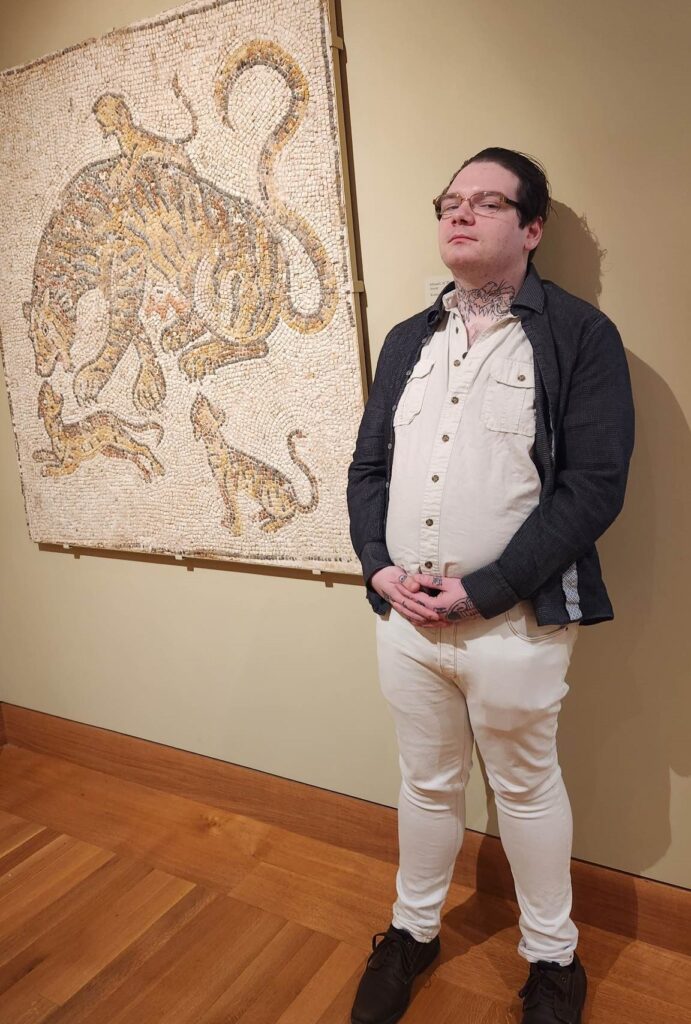
Links
- Colby Smith – Instagram
- Colby Smith – Facebook (Personal)
- Colby Smith – GoodReads Entry
- Colby Smith – Link to Buy ‘Fish Turn Colours’, via Stone Church Press
- Colby Smith – The Aither Contributor Page
- Taung Child – Bandcamp
All images supplied by Colby or sourced online.

